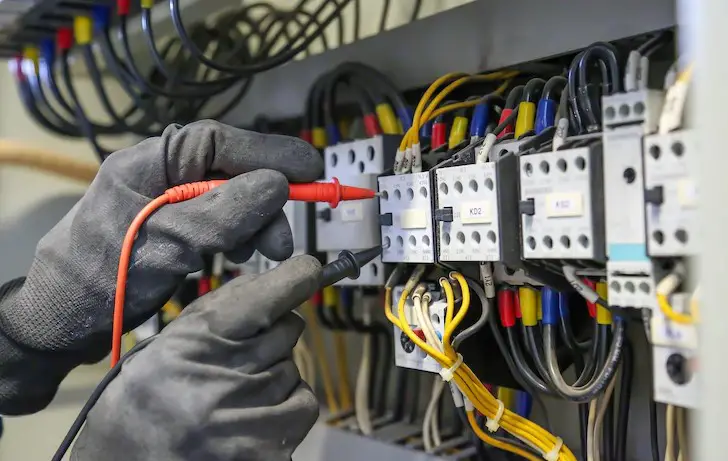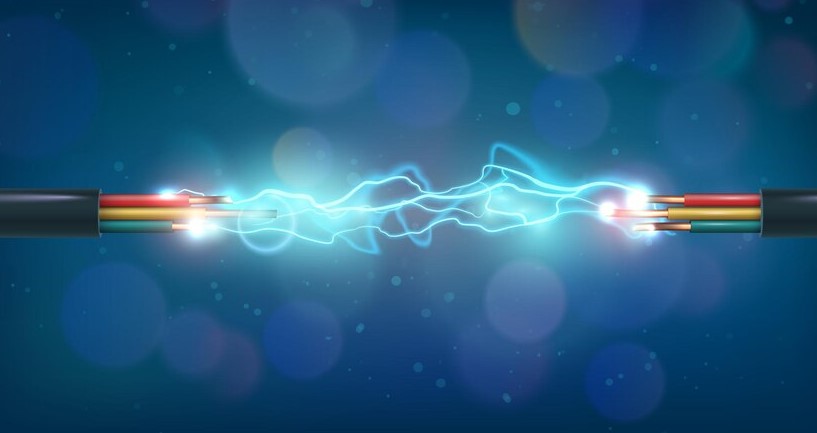An outdoor electrical wire requires being in a conduit if it is exposed. Nonetheless, if the cables are buried, there is no need for a conduit. An electrical conduit is a tube or trough used to protect and route wiring in a building. Electric conduit is made of several materials; they can be made of metal, plastic, fiber, or even blasted clay.
Most conduits are rigid; however, the flexible conduit is used for other purposes. We always prepare to be outside as long as we can during warm or hot seasons, especially after rain, wind, and snow seasons are over. Still, since it would be the sunny season, there would also be electricity running down.
What is the Essence of Using an Electric Conduit on an Outdoor Electrical Wire?

The National Electrical Code (NEC) has a lot of expectations for outdoor circuits and appliances as they do for what is indoors. The critical safety concerns with outdoor wiring are insulating them from corrosion, moisture, underground burial, and physical damages. Most outdoor code requirements do with the running wire above and below the ground. Where the official code requirement calls for “listed” equipment, the products used must be listed for the application by an approved testing agency.
In general, outdoor wiring requires being in a conduit to protect it from physical damage. When exposed, the UF cable needs a conduit; however, there is no need for a conduit in the buried regions.
This article will explore more information about conduits and if outdoor electrical wires need to be in a conduit. Let’s start our guide.
Why Do Outdoor Electric Wires Need to Be in a Conduit?

There are two reasons why outdoor wire needs to be in a conduit; first, the exposed wire needs to be safeguarded from damage, and stapling the naked wire to the siding would not qualify. It would be better to hurl it at least 24 feet above the ground. However, any part above 24 would still require damage protection (conduit).
Some cables are already protected from weather and sunlight conditions by the manufacturer. However, if they are not, a conduit will be of more use in providing the much-needed protection.
Note that plastics are not ideal for exposure to the sun’s ultraviolet radiation. Outdoor graded electrical wire has a grey sheath. It can be buried directly or run in a conduit. However, when it comes out of the ground, you will have to run it through a conduit on the outside.
An electrical wire can also be defined as a conductor. This is no individual current-carrying component. According to the National Electrical Code in the title, “Outside branch Circuit and Feeders,” cables must be suitably protected from mechanical damage. This is one of the specifications and regulations. However, proper termination is required to deter the ingress of water.
Outdoor Receptacles Requirements

- GFCI (Ground-Fault Circuit Interrupter) protection is needed for all outdoor receptacles. Also, there are exceptions for snow melting.
- Your house should have a minimum of one outdoor receptacle at the front and back. The receptacle should be accessible from the ground and not more than 6½ feet above ground level.
- Attached patios and balconies with interior access, for example, from a patio into the kitchen, should have a receptacle, not more than 6½. It is usually advisable that your house have a receptacle on each side of the patio or balcony accessible from the ground.
- The receptacles in potentially humid areas, and a covered porch, should be water-resistant and must have a waterproof cover for safety and protection around your home.
- Receptacles in damp areas that are usually wet or exposed to weather should have water-resistant and have a waterproof cover.
Outdoor Lighting Requirements
- Surface-mounted electrical boxes must be waterproof. Light fixtures in a damp location (those safeguarded by an overhanging roof) must be listed for all damp areas.
- Light fixtures in damp locations exposed to weather should be listed for use in damp areas.
- A low-voltage lighting system should be listed by an official and approved testing technician or agency as a whole system or gathered from individual components that are listed.
- Transformers for low-voltage lighting must be readily available.
Requirements for Outdoor Wiring
- Exposed or buried wiring should be listed for its application; for example, a cable generally used for residential outdoor wiring is type UF.
- A cable can be buried directly with at least 24 inches of cover. Note that it must be buried without a conduit.
- A wiring buried inside a rigid metal (RMC) or Intermediate metal (IMC) conduit should have a minimum of 6 inches of ground cover. Wiring in PVC Conduit should have a minimum of 16 inches of cover.
- Backfill enclosing conduit or cables should be smooth granular metal or without rocks.
- Low voltage should be buried at a minimum of 6 inches deep. This is for not more than 30 volts.
- Burial wiring that runs transmission from underground to the ground should be safeguarded from the required depth to its termination point up the ground or a minimum of 8 feet above the ground.
Pools and Spas Electrical Wire Requirements

- A permanent swimming pool and spa should have access to an electrical receptacle that is not closer than 6 feet and not further than 20 feet from the closest edge of the pool or spa. The receptacle must not be higher than 6½ feet above the pool deck. The receptacle should have GFCI protection.
- The switches controlling pools, spa lights, or pumps should be situated at a minimum of 5 feet from the outside walls unless separated by a wall from the pool or spa.
- Low-voltage light fixtures, also known as luminaries, should not be closer than 5 feet from the outside of the pool or spa.
- The receptacles used to power pump systems on pools and spas should be closer than 10 feet from the interior walls of a permanent pool or spa if they aren’t GFCI protected and not closer than 6 feet from the inside walls of a pool or spa. If they are GFCI protected, they should be single receptacles that cannot operate any other device.
- Electrical service wires overhanging a pool or spa should have a minimum of 22½ feet above the water’s surface or the diving arena.
The Bottom Line
It is a requirement that outdoor electrical wires should be in a conduit. the reason for this requirement is to offer protection from physical, corrosion, and moisture damage. Exposed UF cables require a conduit, but if buried, there is no need for a conduit.
Reference 1: National Electrical Code (NEC) Rules for Outdoor Wiring (thespruce.com)
Reference 2: Does Outdoor Electrical Wire Need To Be In Conduit? – PortablePowerGuides

